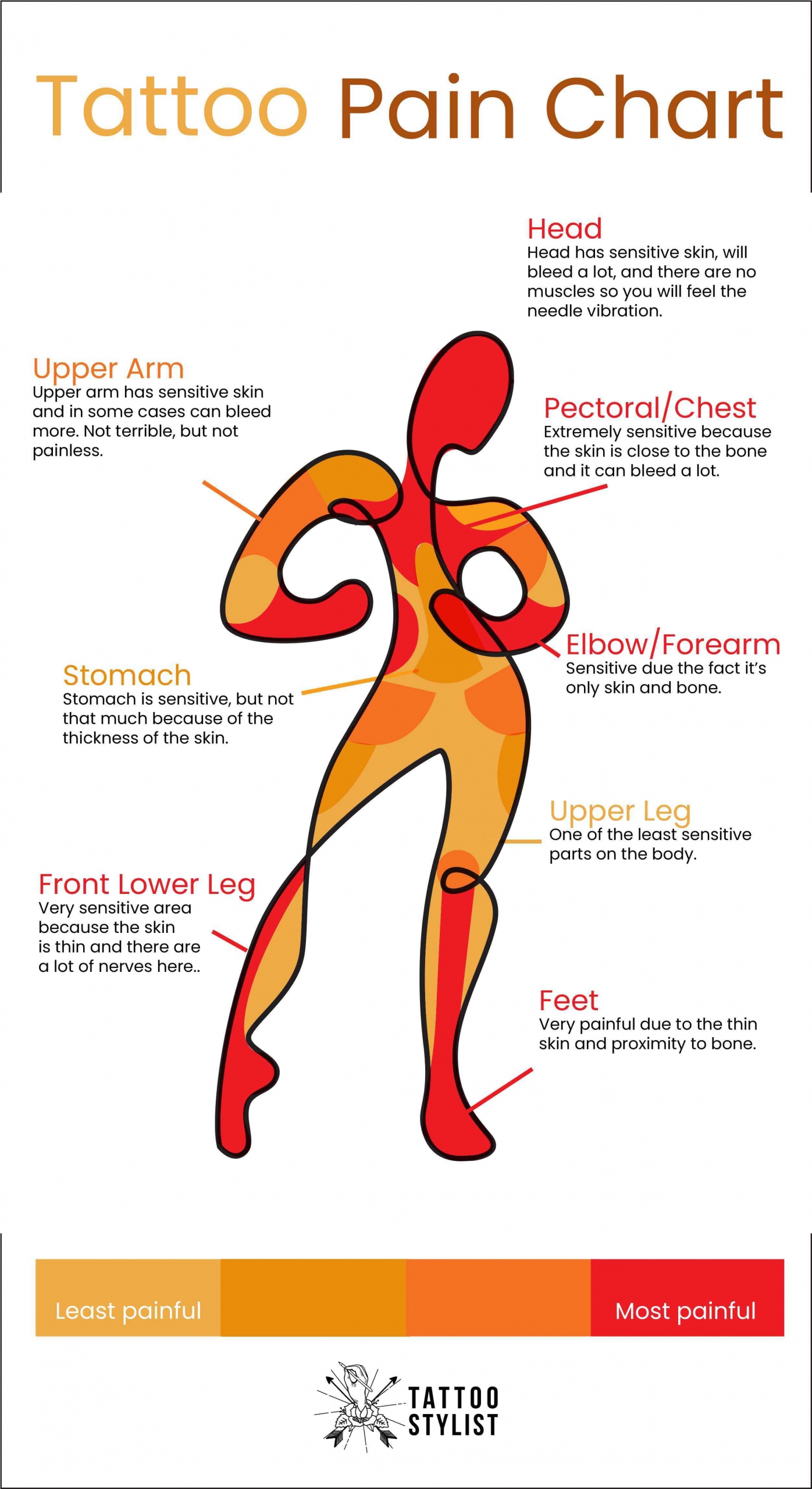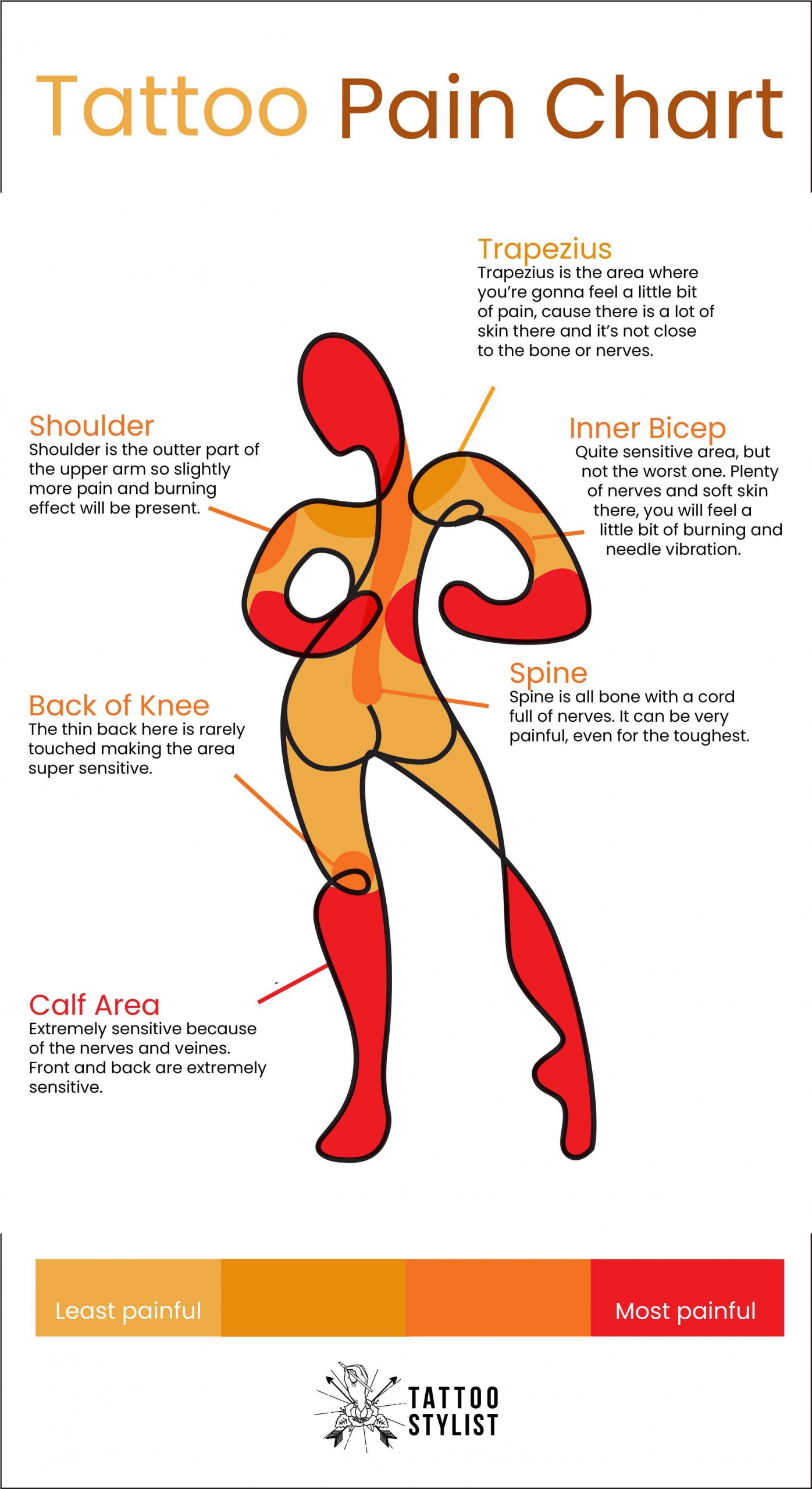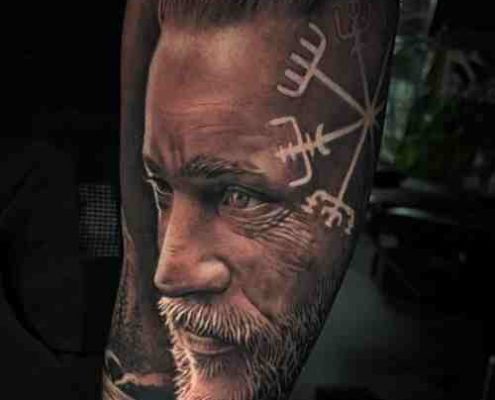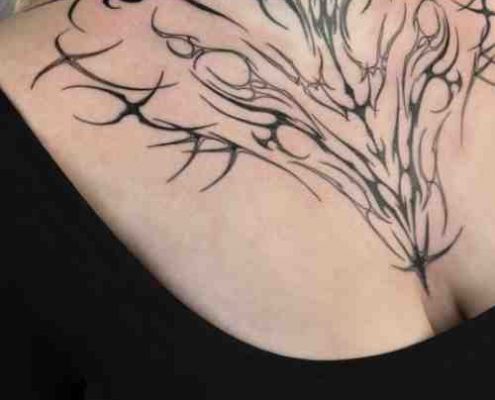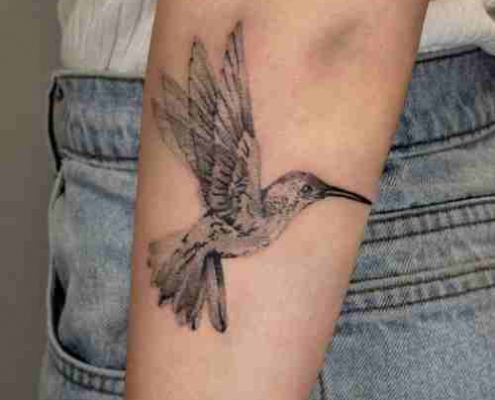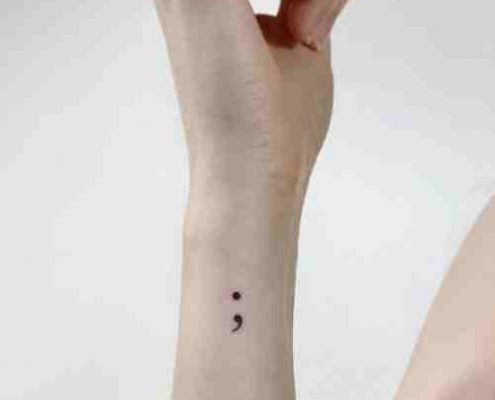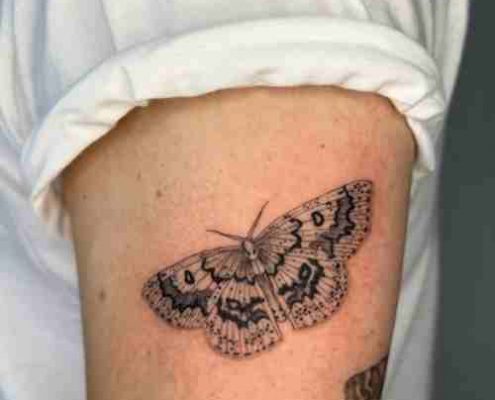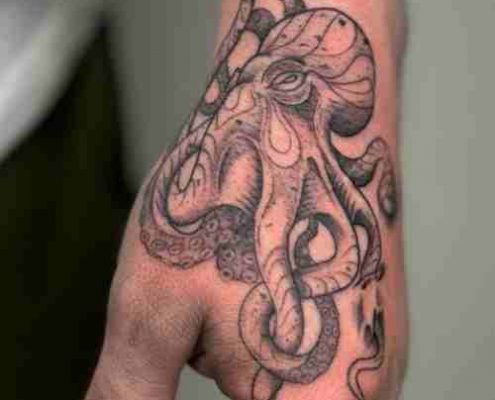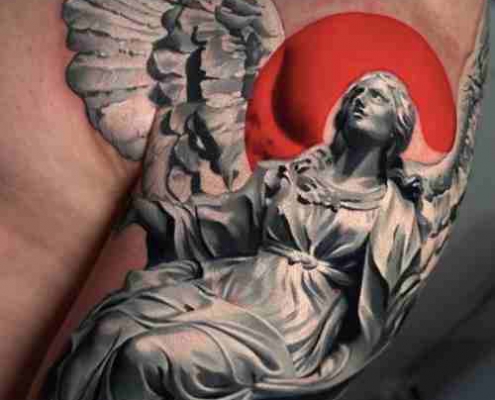Scared Of Tattoo Pain? Here Are The Facts You Need (Tattoo Pain Chart Included)
When deciding to get a tattoo, no matter how excited you are about the message or the tattoo design, there will be a part of you that will inevitably also think about the tattoo pain.
Tattoos are among the most common body modifications globally.
They started thousands of years ago, but according to a 2010 study even today we have 38 percent of all people 18 to 29 years old have been inked at least once in their lives.
However, even experienced tattoo lovers do frown at the thought of having their elbows, knees or belly tattooed.
Some even know a story of people chickening out half way through it.
But, we need to talk openly, and a little bit more clinically, for the curious cats out there – how intense is the tattoo pain and what factors impact it?
For some people, tattoos are very painful. Other love the buzzing vibration and are even able to fall asleep.
All people report that different body parts hurt more than the others.
When it comes to permanent tattooing (the only type we will be talking about in this article), the tattoo artist will have to inject tattoo ink, which contains tiny colorful particles, into the dermis layer of the skin.
The hurtful part comes when the microneedle injections of ink into the skin cause a burning or stinging sensation during the tattoo procedure.
The general consensus is that the least painful places to get tattooed are those with the most fat, fewest nerve endings, and thickest skin.
Logically, the most painful places to get tattooed are those with the least fat, most nerve endings, and thinnest skin.
Bony areas usually hurt a lot.
In this guide we will learn about what it feels like to get a tattoo, which areas are more sensitive, and how to reduce pain before, during, and after a tattoo.
And we have a tattoo pain chart for you to visually understand better.
Tattoo Pain Chart
So, let’s go straight into the a breakdown of the tattoo pain areas.
Depending on the location of the tattoo and an individual’s pain tolerance, people may have different experiences when getting a tattoo.
As said above, the areas that have less fat cells and more nerve endings are painful to tattoo.
These areas are:
- the head, neck, and facet
- he armpits
- the rib cage
- the ankles and shins
- the fingers, hands, toes, and feet
- the knees
- the spine
- the groin
If you’re looking for a pain tattoo pain scale, there is no exact 1-10 tattoo pain levels scale.
Nevertheless, for easier overview, we separated the pain level of tattoo based on most common descriptions of tattoo pain into three categories, as seen below:
What Does Tattoo Pain Feel Like?
To make matters even more complex that just “do tattoos hurt?”, we are now going to go into the different types of tattoo pain.
As said before, the tattooist needs to inject the ink into the skin with the tattoo pen.
Most people would describe this burning or stinging on the area.
Since the outline of the tattoo design needs to be drawn out with the tattoo pen, some people describe the feeling of the outlining as more painful than shading.
Nevertheless, the way you experience pain and the placement of your tattoo can greatly affect how it feels to get inked.
While the following statements are not scientifically proven, there are a few general sensations commonly felt when getting a tattoo.
If you’re the type of a person that likes to be familiar with the sensations before getting tattooed, we’ll break it down below what you can expect to feel and how to tell when your pain isn’t normal.
Common types of tattoo pain include:
- Burning pain or feeling like having something very hot pressed against your skin for an extended period;
- most commonly felt in areas that have had been worked on for an extended time,
- it can be caused by a combination of your skin’s rawness and the repeated trauma resulting from a tattoo needle piercing your skin in the same place,
- this type of pain is most common in areas with more fat beneath the skin,
- burning pain isn’t usually intense, but it can be very irritating.
- Dull or background pain also known as the best kind of pain you could feel while getting tattooed (yes, that exists)
- it represents your body’s reaction to tattooing after it starts producing stress hormones like adrenaline
- these hormones actually help to numb the pain into feeling like a dull ache in the background,
- still, this type of pain can change or intensify at times,
- to stay in the dull pain phase make sure you’re distracted by another activity while being tattooed, such as talking to your artist, listening to music, or watching TV.
- Scratching pain – the most common sensation experienced when you’re getting a tattoo.
- it can feel like an intense scratch moving across the tattooed area
- it can hurt a lot if your tattoo artist works on the same area for a long time,
- it also tends to hurt more when multiple needles are used at the same time, rather than a single needle (like in the cases of shading)
- Sharp or stinging pain that’s also described as many tiny bee stings.
- usually quite intense, it feels like the needle is poking deep into your skin.
- most commonly felt when adding very fine detail or making the outline of your tattoo as the tattoo artist is using fewer needles, or just one needle,
- body parts with thinner or tighter skin are more likely to feel sharp or stinging pain, like the wrists and biceps.
- important note is that if this pain lasts too long and very intense, it might actually mean your tattoo artist is pushing their needles too deeply into your skin (common for newbie tattoo artists) which can cause tattoo deformity called a tattoo blowout, (tattoo’s ink dispersing below just the very top layers of skin)
- Vibrating pain is experienced when you’re getting tattooed in a very bony place
- areas affected are outer wrist, elbows, ribs, ankles
- nerves in your bones may pick up the vibrating sensation, especially if the needle is moving at a very high speed.
Factors That Affect Tattoo Pain
There are many factors that affect how painful it is for a person to get a tattoo.
Across the board on the internet you would find that these factors include:
- the location of the tattoo (forearm tattoos and leg tattoos being famously least painful)
- the age of the person (with aging meaning less pain being experienced)
- the size, shape, and composition of the tattoo design
- the person’s individual pain threshold
- the person’s sex
- the vital state of the person (dehydration, skin texture and quality)
This is a very basic and broad overview, since the conversation is a lot more nuanced than that.
Some people report that the outline work is more painful than the shading of color.
Others may find the shading and coloring work more painful.
There are not that many studies on pain from tattooing, but increasing evidence supports the idea that people who have been assigned female at birth have increased sensitivity to pain compared with people assigned as men on birth.
Many people who menstruate report that pain differs depending on where they are in their menstrual cycle, with the days approaching to getting your period are more sensitive ones.
Psychological expectations have been proven to also be a big factor.
If you go into a tattoo parlor expecting it to be an excruciating experience, this might affect how much pain you actually feel.
Studies suggest that people who feel anxious about and “catastrophize” pain before a procedure often experience higher levels of pain intensity and distress than people with “neutral” pain expectations.
Fortunately, most of the discomfort you feel while getting tattooed will end when your tattoo artist puts down the tattoo gun.
Can Tattoos Be Painless?
Tattoo pain for many is the least fun part of the tattooing process, so if you’re looking to making your tattoo painless, there’s only one road to take:
tattoo numbing creams.
They don’t really guarantee a completely painless experience, but they do let you go through the whole tattooing process with the minimum pain and discomfort possible.
Tattoo numbing creams are designed using active nerve numbing ingredients to reduce the pain or discomfort sensation in different body areas, such as Lidocaine, a local anesthetic.
That said, numbing creams reduce tattooing discomfort, and they are effective for about 3 and 5 hours of tattooing.
The majority of these creams are FDA approved and allowed for over-the-counter use.
This makes it is rather easy and safe to get your hands on a tattoo numbing cream these days.
How Long Does The Tattoo Pain Last?
The good part of the tattoo pain is that it is a sensation you should expect only when the needle is in you.
After the tattooing, it is normal to experience some soreness, swelling, and itchiness, however the pain levels are no where near the injecting the ink itself.
During tattooing, applying tattoo ink into the dermis layer damages the skin and causes blood clots to form, which creates bruising.
This means that the person will need to take care of the area after the tattoo is complete to prevent infections.
You might also see the damaged skin swell up.
This is the body’s natural mechanism for protecting the skin from further damage and helping it heal.
However, it’s exactly this swelling can make the area feel more painful or tender for days, adding discomfort.
Even though the pain associated with tattooing should be most intense during the procedure itself, we still advise to plan out your inking sessions well and according to your lifestyle.
For bigger pieces, such as tattoo sleeves, expect to take some days off, especially if you get parts of your body tattooed that need to rest for proper healing (elbows, needs, and all the joints).
How Do You Deal With Tattoo Pain?
If you’re wondering how to minimize pain when getting a tattoo, there are certain things you can do that will ease the discomfort surrounding tattooing.
Here are our few tips to minimize tattoo pain:
- Ask for breaks – your tattoo artist can take breaks when you’re having trouble dealing with the pain, and don’t shy away from asking for them
- Choose a very experienced tattoo artist, since they will have a “softer hand” and know how to deal with the pain you’re about to experience, warn you and talk you through it
- Be properly fed and hydrated, so that you can stay calm and stable throughout the session (doesn’t apply if you’re getting your stomach tattooed).
- Get enough sleep the night before – not only does it help with your pain endurance, but also your ability to stay put in a position for a longer period.
- Be sober. As much fun as it sounds, it can cause more harm than good as alcohol thins your blood and can cause bleeding and bruising
- In the days leading to your session, stay hydrated to keep your skin supple and tight to reduce the pain of a tattoo.
- Try a numbing product on your skin before getting your tattoo to reduce the amount of pain you experience
- Follow tattoo aftercare instructions given by your tattoo artist to reduce pain and the risks of complications after your tattoo is finished.

Milena Petrovic
About the author
Milena has decided to start an organization that will create a safe environment for everybody to get their first, second or third tattoo and to encourage young people to transform their ideas into tattoos safely, with talent and vision.
You can find her writing about tattoos on Quora or updating our Pinterest profile with awesome tattoo ideas!



